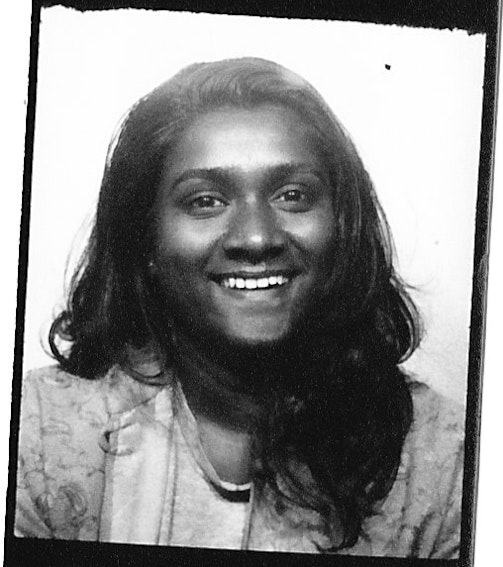Levelling fields of play at the Kathmandu Triennale
Shivanjani Lal
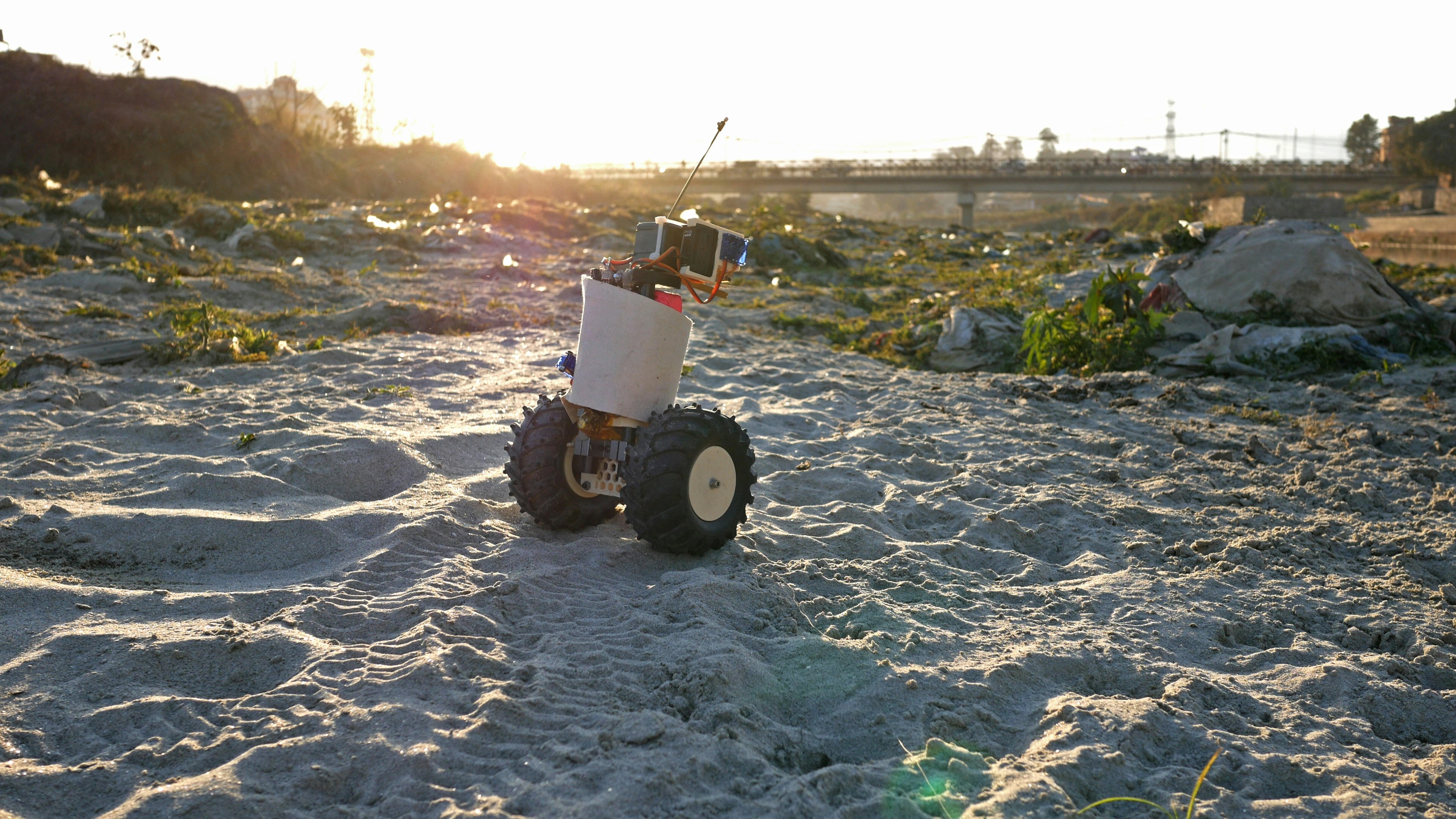
Michael Candy, Ether Antenna (film still), 2017; Kathmandu Triennale, 24 March – 9 April 2017, courtesy the artist.
What is a city? How are cities shaped? What role can artists play in such a place?
These are questions that I often ask myself. I am curious about the ruptures and connections between material structures and their perception that can occur when artists encounter a city. How a city shifts or can tilt on its axis of historical foundation—including not only an individual artist in its purview, but an entire spectrum of communities that can often reveal the complexity of what an idea of ‘home’ can be. Earlier this year I attended the inaugural Kathmandu Triennale which was titled The City / My Studio, The City / My Life. In many ways, the theme inferred by this title sums up how I feel about the city and its possibilities for artists. Across the Triennale’s four main exhibition sites—Patan Museum, Nepal Art Council, Taragaun Museum and Siddhartha Art Gallery—and multiple satellite events programmed within Kathmandu, contemporary art allows us to filter past the colloquial and tourist ideas of Kathmandu as an Asian city of lights into hopefully a more nuanced understanding of this community as a site of contemporary arts practice. Kathmandu is a city that has seen significant trauma and is reconstructing itself following the 2015 earthquakes. The destruction of this natural disaster is still present and visible in the streets and in the lives of its residents. How can contemporary art be helpful here? The Triennale’s slogan will tell you: Art Thrives Here. Certainly, art has always existed and been nurtured in Kathmandu, and so I’m prompted to ask the Triennale’s organisers the corollary question: what kind of art? ‘Contemporary art’ and its supporting structures is often employed as a tool for Western and ‘white-centric’ thought, so how can that paradigm be subverted here?
As this was my first visit to Kathmandu I had no idea what to expect. I am not a person who hikes, and I figured art is probably the only thing that would allow me to connect to this place in a meaningful way. However, having just attended the Kochi-Muziris Biennale, the urge to compare the two artistic enterprises was present. There are similarities: Kochi is in its third iteration; this was Kathmandu’s third iteration of an arts festival, its first as a more visual art focused Triennale, rebranded to suit the burgeoning global art market that has considerable vested interest in creating an identifiable entity that might be called ‘the South Asian arts scene’ as a means of broadening inventory. Conversely, there is a marked difference in scale: Kochi’s biennale is a juggernaut that runs for 108 days, with just under a 100 artists, across 12 sites; while Kathmandu operates on a considerably more modest scale with the work of 50 artists presented over 17 days within 4 main sites. In comparing the two, I am acknowledging the place of both in the region, in the hope that they can co-exist to allow for more opportunities for artists, but also to broaden the understanding of the aforementioned ‘the South Asian arts scene’ away from India into more localised practices that have equal value in the arts scene.
Curator Philippe Van Cauteren, director of Gent’s S.M.A.K. Museum for Contemporary Art, constructs a narrative that wove past and present, local and guest into a complex statement about Kathmandu and the city that, months later, I am still unpacking. Van Cauteren’s curation created space for complex ideas of the city to be fleshed out, which made me rethink Kathmandu as a material city to be reshaped. His unique approach was to have almost all the art works constructed on site with most artists arriving just a few weeks in advance of the exhibition in order to realise this directive. This curatorial approach enabled a significant advantage to Nepali artists, offering them a more even playing field—in this case, quite literally fields in which artists could play—upon which to test artistic inventiveness alongside some of the heavyweights of the global arts scene: Francis Alÿs, Song Dong, Cai Quo Qiang and Kader Attia to name drop just a few. This levelling conceit facilitated an opportunity for Nepali artists to shine and to create intelligent, playful and provocative works that only Kathmandu ‘insiders’ could deliver about the city and their home. Thereby moving the idea of the city, away from an outsider or nostalgic viewpoint of Kathmandu into a more felt and experienced insider understanding, that opened up Kathmandu to the hopes of those who call this place home as well as those who are just passing through.
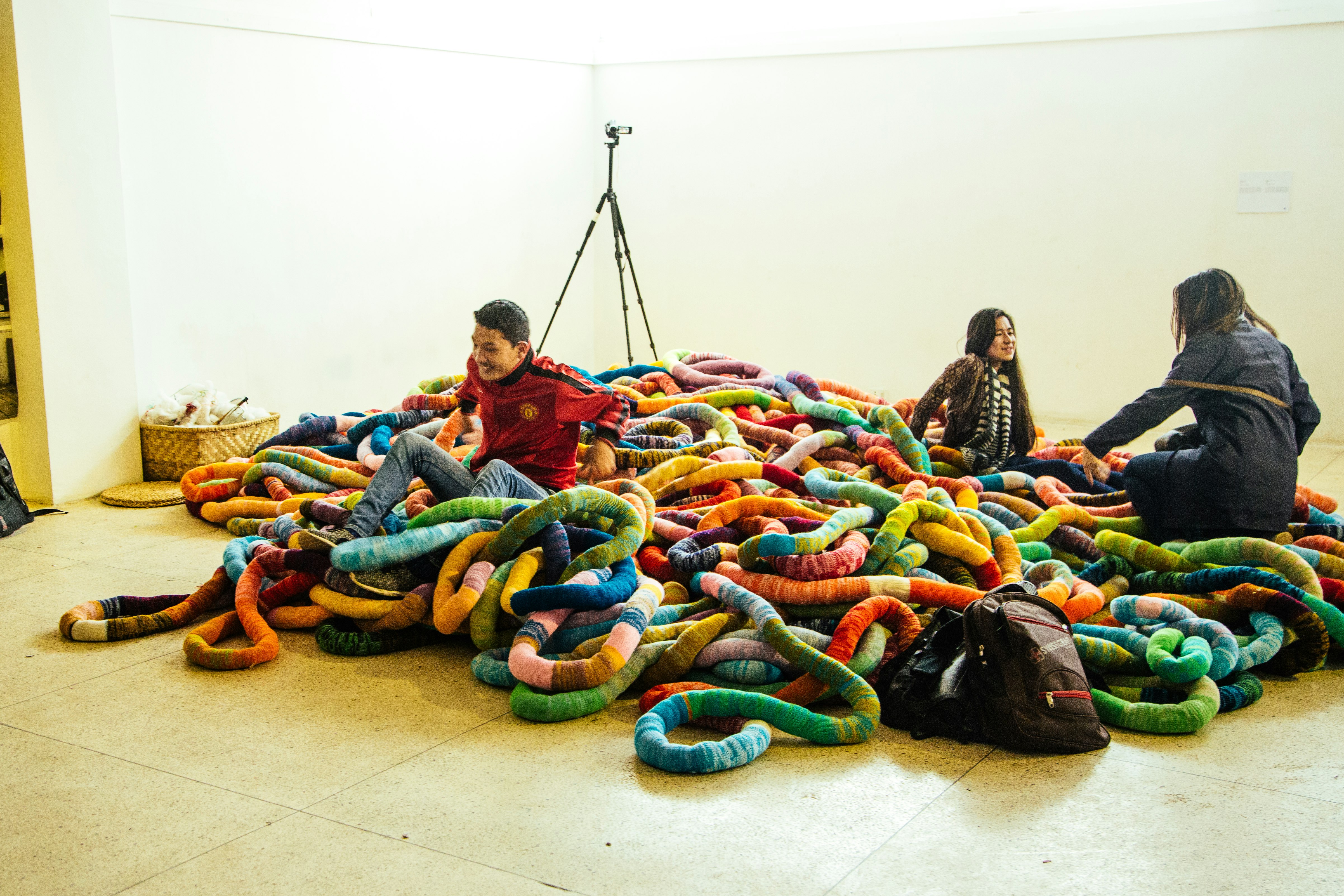
Manish Lal Shrestha, 1336 (installation view), 2017; Kathmandu Triennale, 24 March – 9 April 2017, photo: Kathmandu Triennale, courtesy the artist.
Asserting a forceful impression upon me, the following works in particular by artists Manish Lal Shrestha, Amrit Karki and Bidhata KC created a lasting visual memory of the city of Kathmandu and allowed the community to be visible, history to be preserved and the city to be opened up. Manish Lal Shrestha’s 1336 is a work that explores labour, community and process as a way to open up and make labour visible. The Kathmandu valley is 1336 meters above sea level and this work makes that elevation visible through a brightly coloured knitted rope that was constructed on site and continually added to during the exhibition. Made by members of the community, specifically women and students that the artist had existing relationships with, 1336 displayed as a heaped mound in the Nepal Art Council, was a site of joyful exuberance. In a conversation with Shretha, he noted, ‘Actually, my whole intention was … to deal with the community and to work with the community and at the same time … to omit the distance between the viewers and the artwork, or the artists or experiences (1). Moreover, he spoke of the distances in traditional spaces and how this work was an attempt to create the opposite of that feeling. It was about making the community visible: ‘If people are not there in the city then how can we see the city… I wanted to create in the space … a work with the public, it came from the public it goes back into the public.’
Manish Lal Shrestha succeeds in eliding distances and creating a work that provides a warm welcome for both locals and tourists, whilst accounting for labour, process and, most importantly, making a community present and visible in a site that is not always the most welcoming of places. It did this by providing a space defined by generous hospitality towards audiences and through its display which engaged a hand loom, music and a pile of woolen tubing that encouraged visitors to interact with, either by jumping onto, lying on or dancing around the pile of wool. This ensured that the community that Shrestha was invested in the work’s modes of generative production and display. By the time the work reached its intended length of 1336 feet, the culmination of its physical form was presented to the community, shifting the work away from the gallery space and into the public, creating an opportunity for art and the community to connect in ways that removed distances and blurred the lines of who could make art, who could handle art work, where art could be seen and finally shown.
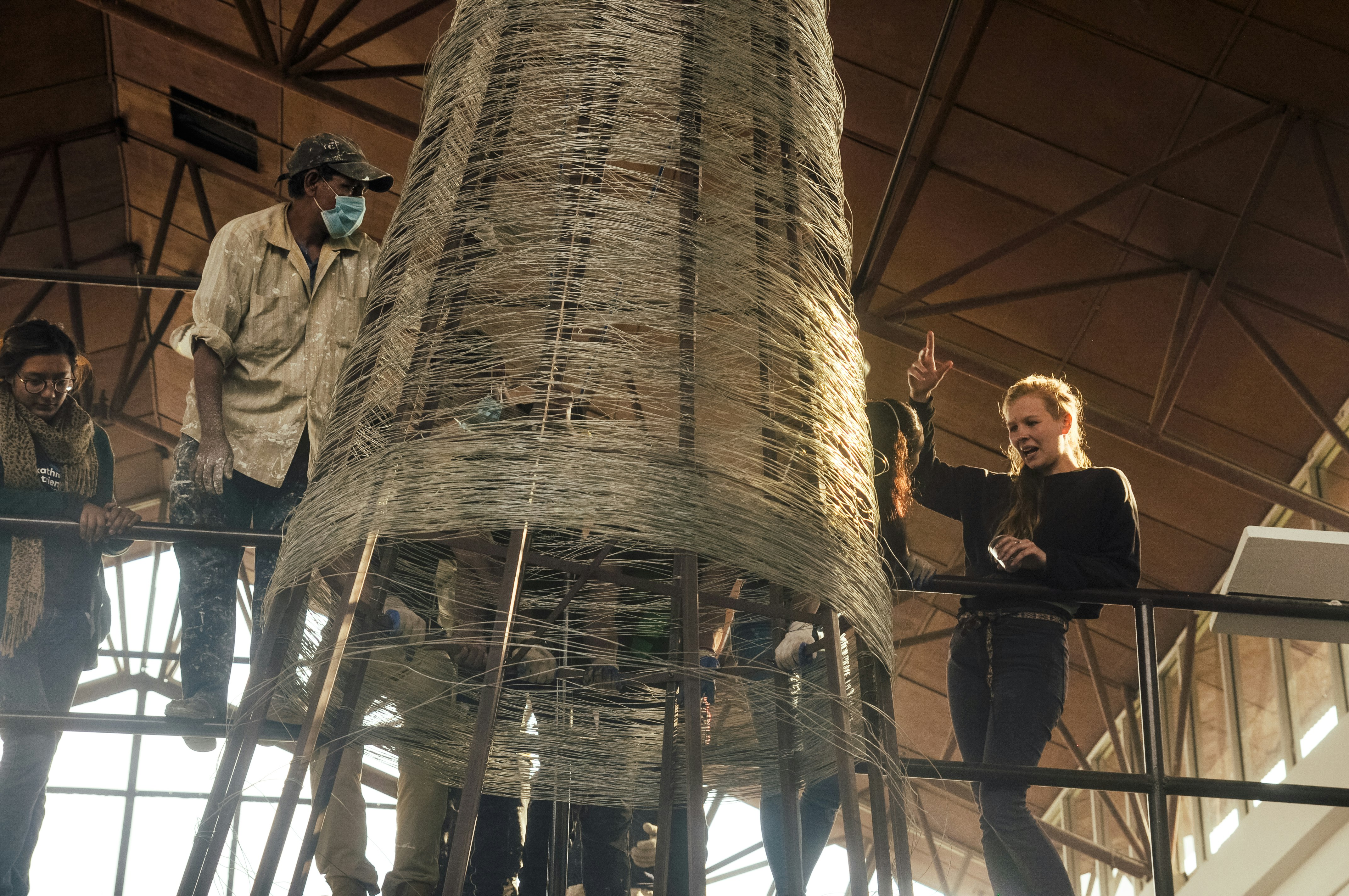
Bidhata KC, In Between (installation documentation), 2017; Kathmandu Triennale, 24 March – 9 April 2017, photo: Kathmandu Triennale, courtesy the artist.
Bidhata KC’s In Between was prompted by the question, ‘What is superstition and what is culture?’ (2). In its immense sculptural form that stretched across the three floors of the Nepal Art Council building, KC’s intervention acted as a response to Seto Machindranath, an ancient chariot festival that is celebrated throughout Kathmandu, where giant wooden chariots are built and paraded in the streets before prayers. KC sought to account for this public celebration of tradition by bringing the form of the chariot into the gallery and replacing wood with metal, and in this sense retraces myriad pathways that ancient culture navigate through modern Kathmandu. In Between asks prescient questions about how culture can and should be preserved. What made this work compelling as I stood before it was how it could never be seen in its complete form. The components of the work were stacked on top of each other, separated by the three floors of the Nepal Art Council, which in effect made the audience responsible for completing the work as they advanced up each floor to encounter the work as the moved upwards through the space, thus making us responsible for how this culture can and should be preserved.
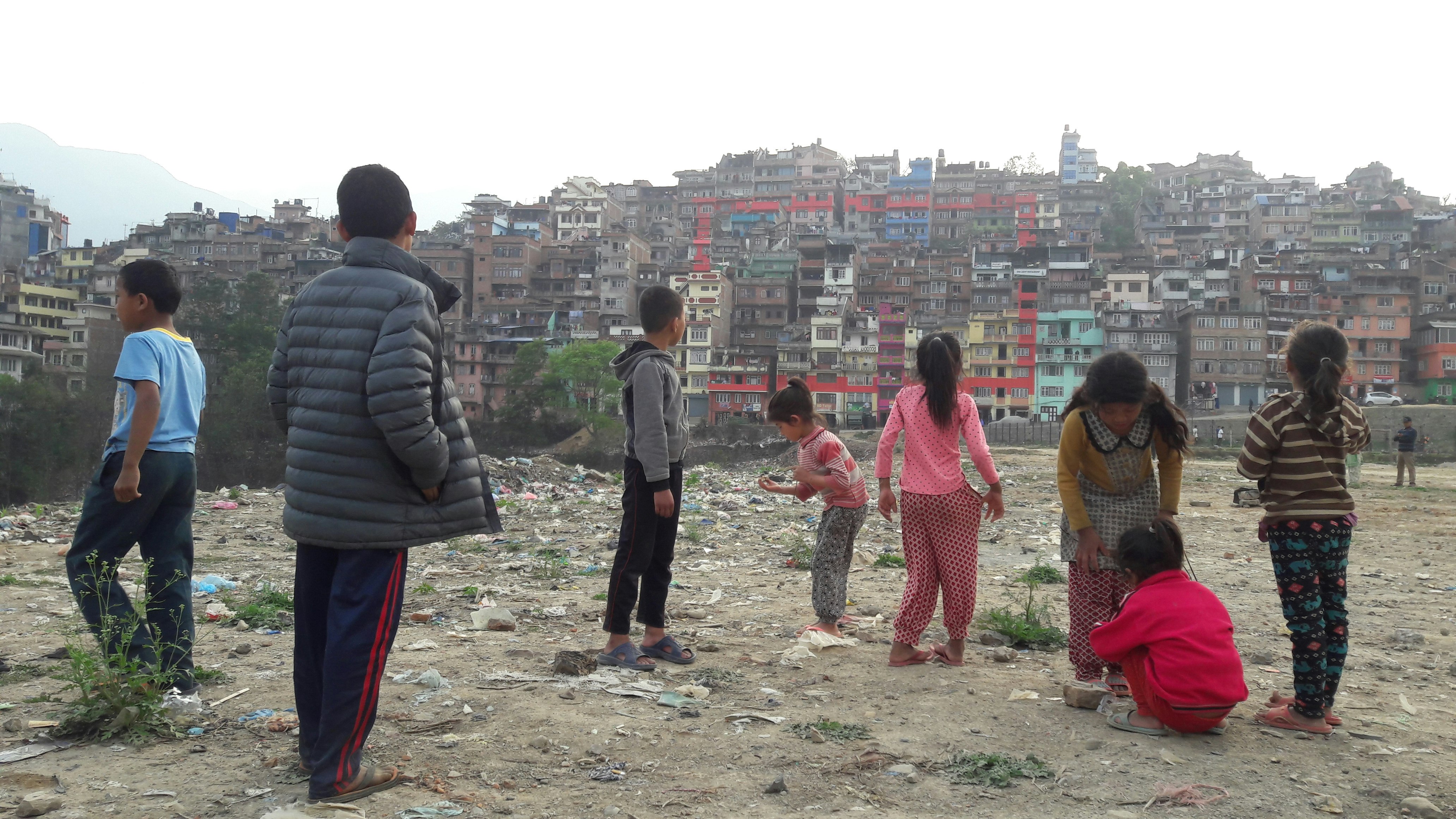
View of Kathmandu showing Amrit Karki’s site-specific Rectangle, 2017; Kathmandu Triennale, 24 March – 9 April 2017, photo: Kathmandu Triennale, courtesy the artist.
Amrit Karki’s Rectangle signaled the curator’s move away from the confines of the gallery and into the city itself by literally drawing a map upon its surfaces: a bright red mural that crossed twenty façades of the neighbourhood of Kirtipur, the heart of the Newari community of Kathmandu. Karki, originally from Pokhara in Nepal; spent months working with Newari friends and the community, spending time on the site and with home owners finally convincing 20 houses to be part of this large scale mural, with only two reticent houses declining to participate (3). The fact that the work was incomplete in that its contiguous line was punctured provided an opening for reflection upon the growth of the city, but also opened up a portal for interpretation that could be read in two ways: firstly, as a mural spread across the façades of the houses viewed from afar literally acting as a frame to look into this community. The more interesting way to view this work was to use the Rectangle to frame your experience. Essentially to use it as a map that opened up a part of the city to those of us not from this city. Walking into the space of the mural was not a sensation I had felt before in contemporary art, it was as though the city was welcoming me. Yes, I am romanticising this encounter; however, when so much care was taken in creating understandings between the artist and the community, surely the residue of those meetings would affect the site and create a sense of welcome? Interestingly, all the families who participated have chosen to keep Rectangle up allowing this small piece of the Kathmandu Triennale to still be visible thereby shaping the city of Kathmandu.
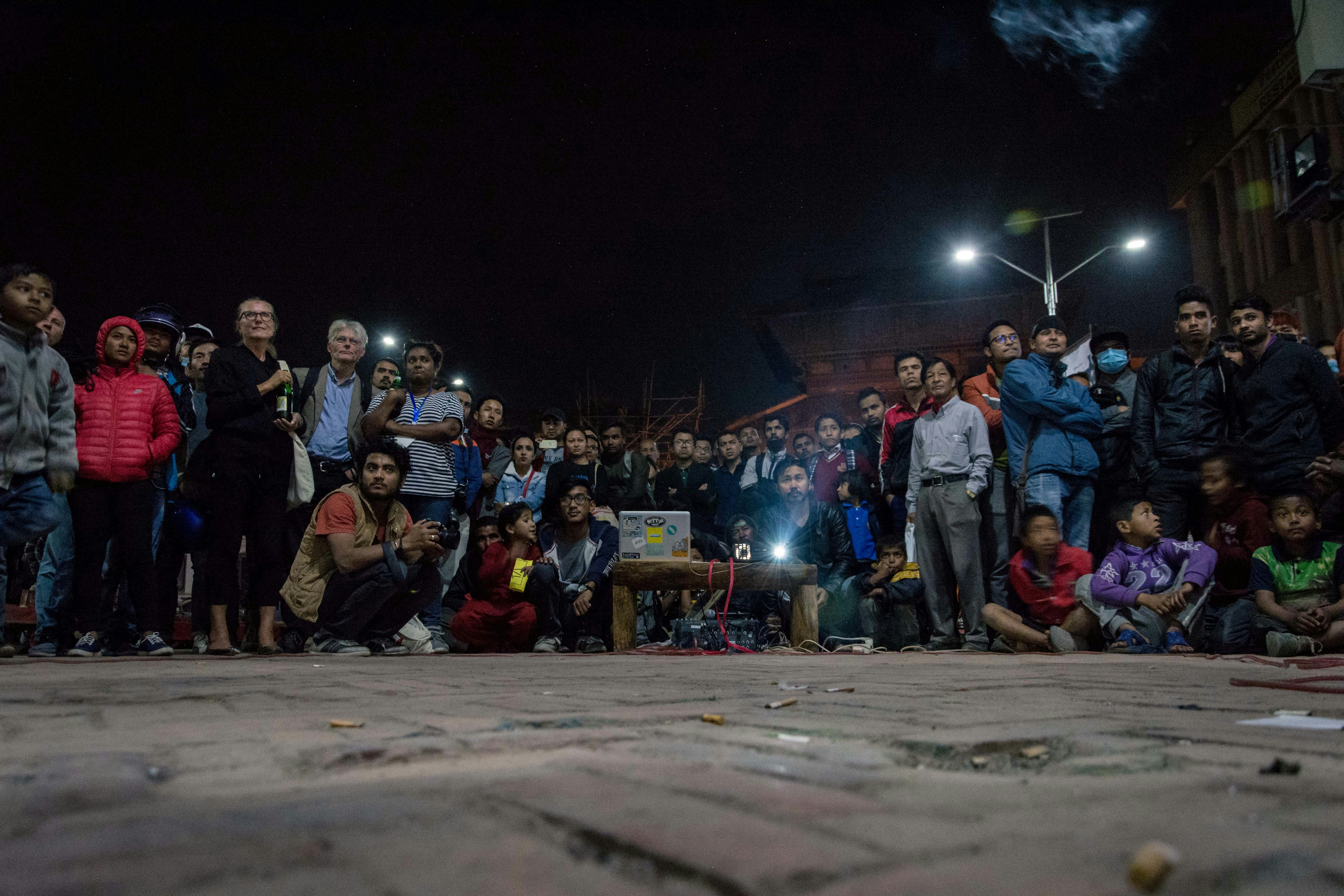
Viewers gathered around Michael Candy’s screening of Ether Antenna, 2017; Kathmandu Triennale, 24 March – 9 April 2017, courtesy the artist.
Australian Michael Candy’s video work Ether Antenna was a satellite event of the Triennale. The work was filmed during an Asialink residency that Candy undertook in late 2016, producing a number of robots that, when animated, retold a local Buddhist story. Shot entirely on location in Nepal (mostly around Kathmandu), Ether Antenna seeks to create links between the ancient spiritual and the technical now. Candy spoke to me about his interest in technology and its synergy with tradition and how the beginning of this work came about through his time in India where he witnessed prayer wheels (4). In making this work in Kathmandu linking technology to a contemporary culture that still visibly accesses the spiritual allows, Candy manifests a space in which both can co-exist. Together with street cinema organisation Bato Ko Cinema, Ether Antenna was screened in multiple locations throughout Kathmandu, such as Patan Darbar Square and other locations where the film was shot. Often surprising the public by appearing unannounced, it was wonderful to witness the spontaneous viewings—children immediately got a kick out of the robots and adults slowly being beguiled by the story. This was a highlight of the Triennale for me, as audiences that would not normally have viewed this work if it had been presented inside official buildings got a chance to experience it in their home environment.
Honoré d’O, who hails from the city of Ghent where Van Cauteren is based, created a wonderfully weird work, BeTEKA, that proved another example of how time allowed an artist to present a work that could connect with and offer something to the community. BeTEKA was an installation made of tape, stamps and wooden slats, creating a support stand that people were invited to lean into and essentially complete the structure by giving their time, energy and support. In turn, they were rewarded with a certificate that denoted the amount of time they leaned for and was authorized by being stamped and signed by the artist, curator Phillipe Van Cauteren, manager of the Kathmandu Triennale Nischal Oli, and Sangeeta Thapa of the Siddharta Foundation, a principle supporter of the Triennale. When asked about why he decided to participate d’O responded:
This time, I went much deeper into the beating heart of a society. The first time in Nepal I was climbing, meditating in the mountains about my own themes, how they were able to speak. I stayed very much a tourist. This time I went much deeper into the living community. Now I was a colleague in the real life of the people. It felt like an enormous honour to be the guest of many (5).
BeTEKA bought into the gallery space the support structures still visible on the streets of Kathmandu. The work was about energy and asking audiences to provide support by leaning into a structure. As d’O explains:
Here we are in the grass of the essence. Support is the way of working, cooperation is the soul of community. Let’s call that format ‘the support stand’; I want the support stand also appearing as a mental intention. Living together demands an upward energy. Let’s push it … The supporting stick in the street became a logic inherent formal element. I took the function to the gallery and tried to transform it into a mental state of understanding. It’s good to be the supporting part of the other, in connection with the processing whole. We are the city, the city is the assistant, the aid, relief and rescue (6).
Though playful, BeTEKA signaled something deeper: a transference of energy and intent from a guest towards a community. A show of support for a community that was still in need, not just for money and infrastructure to rebuild itself but the good will and energy of others to help the spirit of this place, of Kathmandu to keep going.
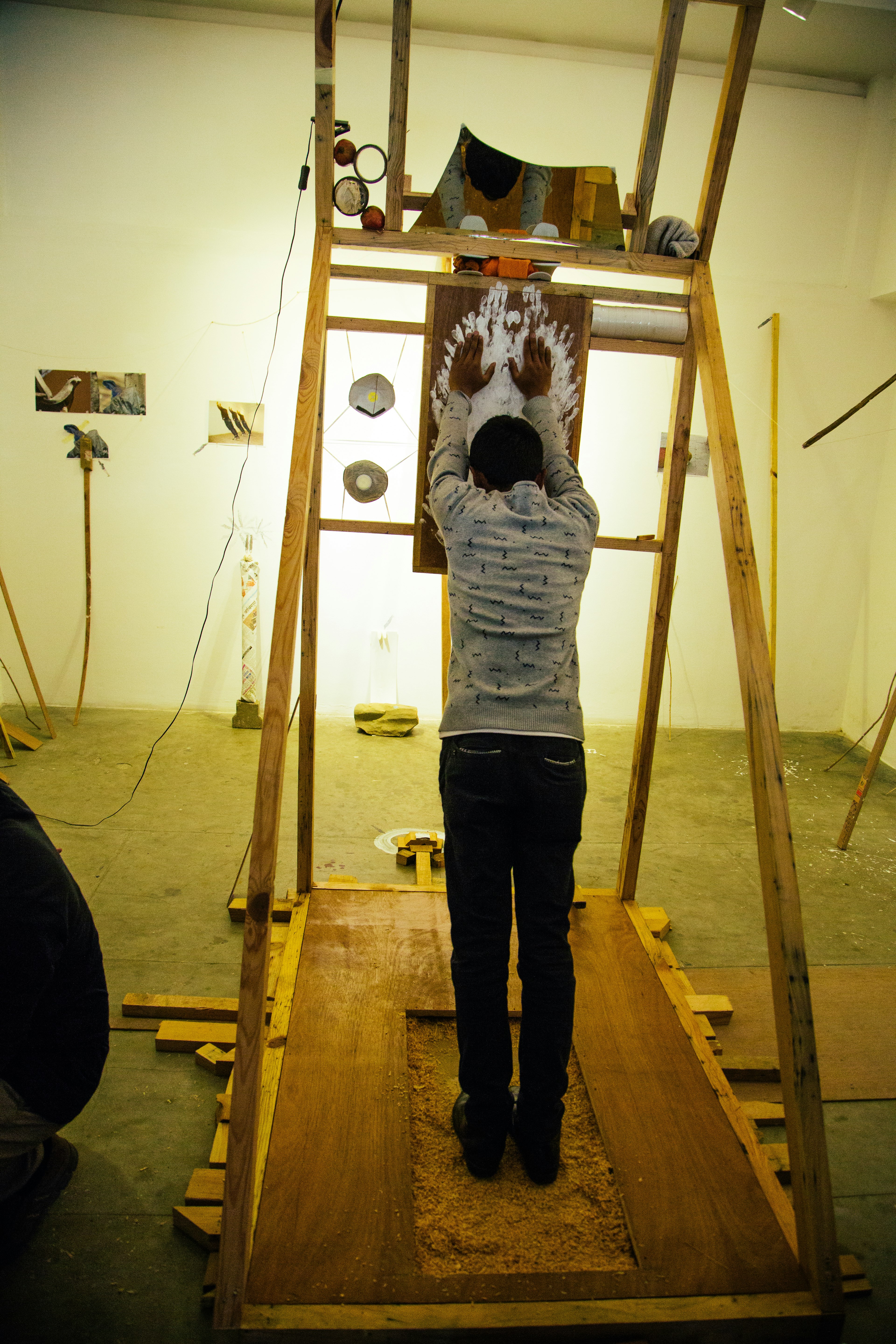
Honoré d’O, BeTEKA, 2017; Kathmandu Triennale, 24 March – 9 April 2017, photo: Kathmandu Triennale, courtesy the artist.
The works discussed here, among others, revealed a city in dual perspective: views of artists who knew Kathmandu the city by being local, and views of artists who explored the city as foreigners and examined and shared the city that they came to know. Van Cauteren’s curatorial approach relied on artists to set the level of their engagement by advising artists that their work either had to be small enough to fit into Van Cauteren’s pocket, or they had to come to Kathmandu and make work there. There was next to little budget to ship and freight artworks into Nepal. Artists could spend as much or as little time as they wanted to in Kathmandu. Those with a clear vision of what they intended to make used their time in the city essentially as a de-facto artist-in-residency program. This meant that if artists wanted to develop a connection with the Kathmandu community they essentially needed to be locals, such as Shrestha, KC and Karki. This is not to say that artists who participated in the Triennale from places other than Kathmandu could not make work that resonated as strongly as that made by locals, but rather it is to question the entire premise of the international model of biennales/triennales more generally which is, unfortunately, often determined by fly-in-fly-out terms of engagement. The more successful works made by non-Nepali artists came from artists who spent more time in Nepal or who had very clear ideas of what they intended to make.
In unpacking The City / My Studio, The City / My Life I could have told you about the paintings of Carole Vanderlinden, the patchwork neighbourhoods meticulously stitched by Sunita Maharjan, the cut into newspaper works of Youdishir Maharajan, the small sculptural birds of Richard Brey, the photographic images of the Bart Lodewijks, or Heide Hinrichs’ The Birds of Nepal. All these works and more were beautiful and at times political in their separate and cumulative contribution to the construction of the Triennale which in turn revealed the character of Kathmandu to me. Conversley. I am choosing not to speak of the works that disappointed. I must, however, attest to the generosity and the multiple experiences of inclusiveness created by the communities within Kathmandu towards artists and guests of their city. Kathmandu proved an art city that has always existed, remaking itself as others discover this fact.
Notes
(1) Manish Lal Shrestha in conversation with the author, 23 September 2017.
(2) Bidhata KC in conversation with the author, 15 August 2017.
(3) Amrit Karki in conversation with the author, 31 August 2017.
(4) Michael Candy in conversation with the author, 11 September 2017.
(5) Honoré d’O in conversation with the author, 21 September 2017.
(6) ibid.
About the contributor
Shivanjani Lal is a twice-removed Fijian-Indian-Australian artist and curator.
